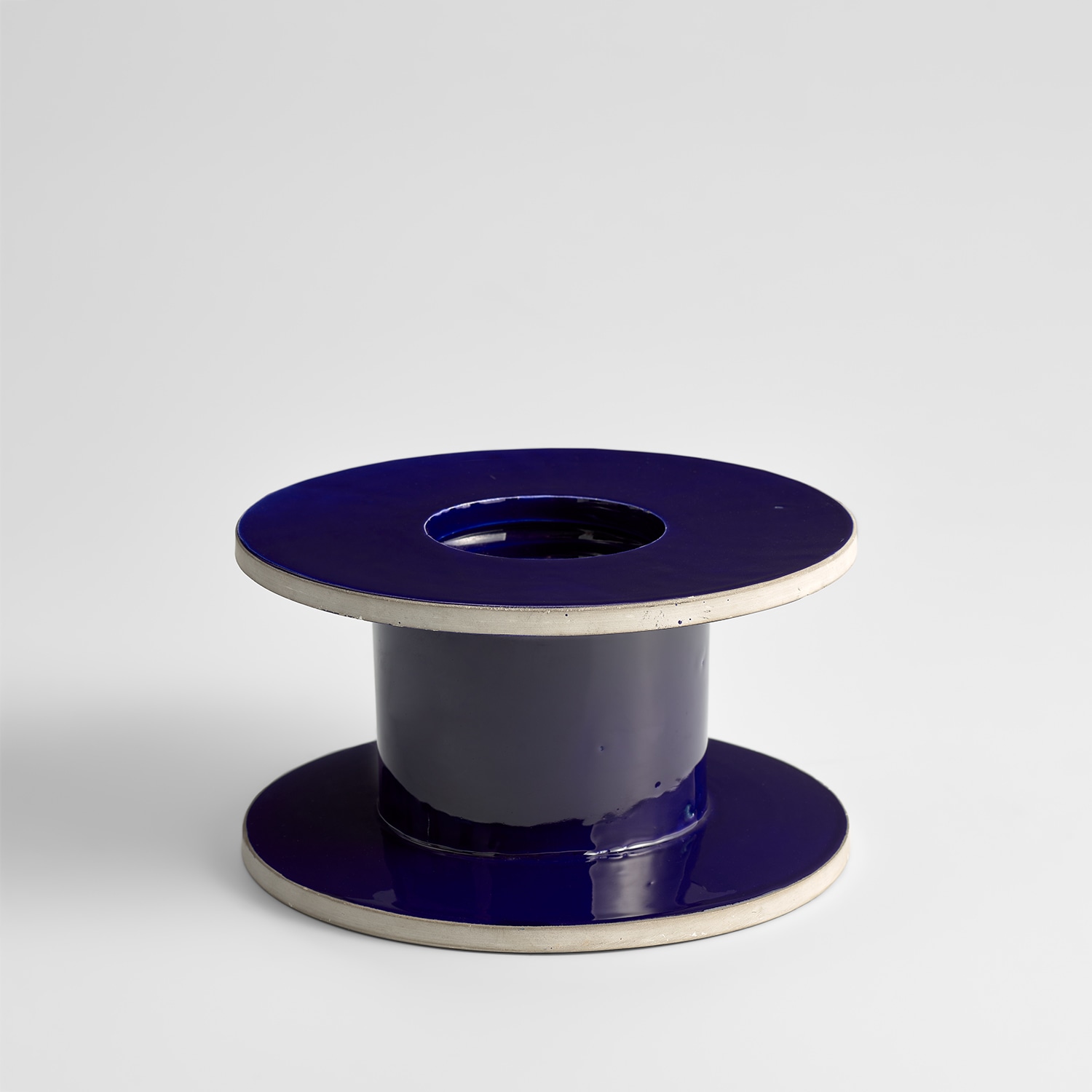





10
Ettore Sottsass, Jr.
Prototype 'Rocchetto' vase, model no. 484, from the 'Rocchetti' series
circa 1961
Glazed earthenware.
11.3 cm (4 1/2 in.) high, 21.5 cm (8 1/2 in.) diameter
Manufactured by Bitossi, Montelupo Fiorentino for Galleria Il Sestante, Milan, Italy. Underside painted 484/IL SESTANTE/SOTTSASS/ITALY.